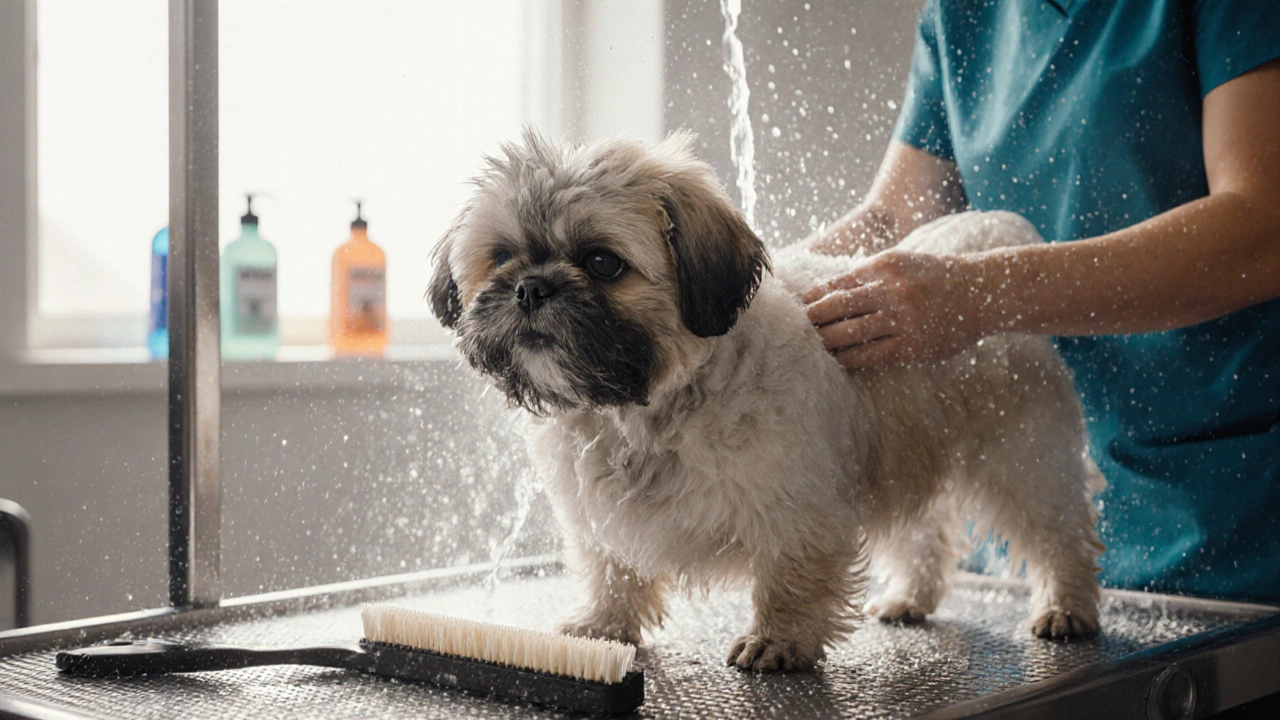Professional Dog Grooming: What It Includes and Why It Matters
When you think of professional dog grooming, a full-service care routine that goes beyond bathing to include trimming, brushing, nail clipping, and ear cleaning. Also known as pet grooming services, it’s not a luxury—it’s a necessity for most dogs, especially those with thick, curly, or long coats. A good groomer doesn’t just make your dog look nice. They catch skin issues early, prevent painful matting, reduce shedding around the house, and even help with anxiety by creating a calm, predictable routine.
Professional dog grooming dog grooming frequency, how often a dog needs a full session based on breed, coat type, and lifestyle varies widely. A Poodle might need a trim every 4 to 6 weeks, while a Labrador might only need a bath and brush-out every 8 to 12 weeks. It’s not about the calendar—it’s about the condition of the coat. Matted fur isn’t just ugly; it traps moisture, causes hot spots, and can lead to infections. That’s why many vets and groomers recommend checking your dog’s coat weekly and scheduling professional sessions before problems start.
Not all groomers are the same. Some specialize in anxious dogs and use dog groomer calming aids, safe, non-medical tools like pheromone sprays, quiet environments, and gentle handling techniques to reduce stress. Others focus on specific dog coat types, such as double-coated breeds, wire-haired terriers, or hairless dogs—each requiring unique tools and approaches. A groomer who knows how to handle a Shih Tzu’s fine hair won’t necessarily do the same for a Newfoundland’s dense undercoat. That’s why it matters who you choose.
And it’s not just about the cut. Professional grooming includes checking for ticks, lumps, ear infections, overgrown nails, and even signs of arthritis. A good groomer will tell you if something looks off—sometimes before your vet does. It’s a health check wrapped in a bath.
Many owners think they can skip the pro and do it all at home. But unless you have the right tools, space, and experience, you risk hurting your dog or making things worse. Electric clippers need training. Detangling mats takes time and the right brush. And if your dog hates being handled, a professional knows how to work with that—not against it.
What you’ll find here are real, practical answers from dog owners and groomers alike. How often should you really schedule a session? What’s the truth about calming treats? Can you save money without sacrificing safety? Is $20 a fair tip? We’ve pulled together the most useful posts to cut through the noise and give you what actually works.
Do Dog Groomers Wash or Cut First? The Right Order for a Safe, Clean Groom
Dog groomers always wash before cutting because it's safer, more effective, and healthier for your dog. Dirty fur hides skin issues, clogs clippers, and leads to uneven cuts. Washing first ensures a clean, precise groom.
